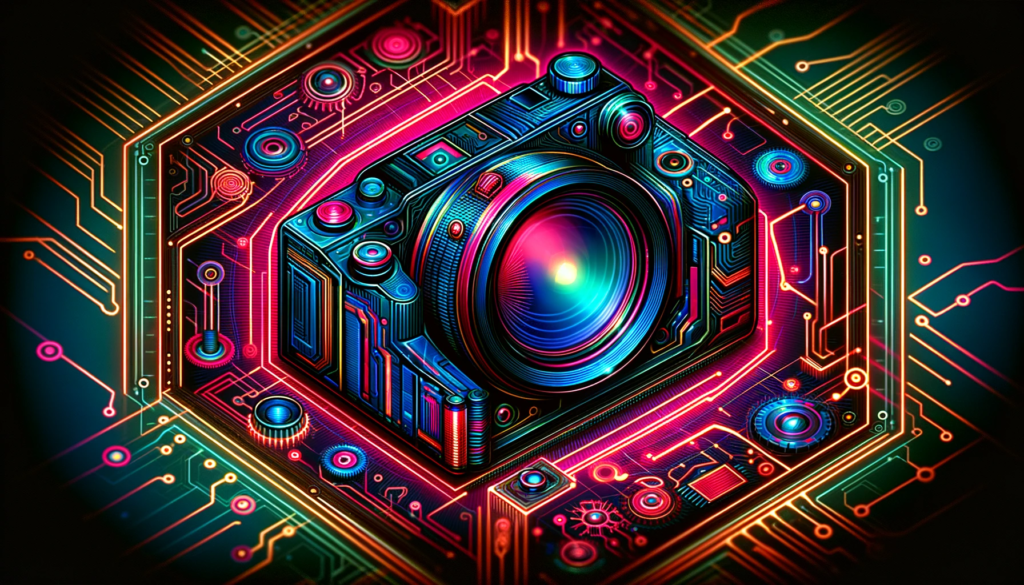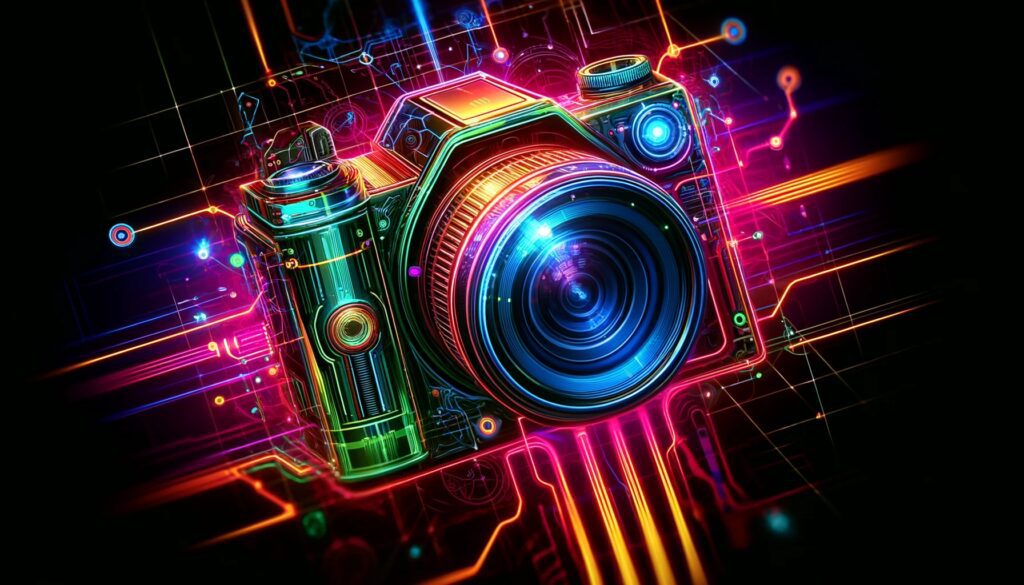
Samsung is revolutionizing photography with AI-powered cameras that see the world almost like humans do. With advanced scene recognition, real-time adjustments, and deep learning enhancements, these cameras don’t just capture images—they interpret them. Whether you’re a casual shooter or a pro, Samsung’s AI is pushing the limits of what’s possible in mobile photography.
Let’s dive into how these smart cameras work, what makes them special, and why they could change how we take photos forever.
AI-Powered Scene Recognition: Smarter Photography
Understanding What the Camera Sees
Samsung’s AI cameras use deep learning algorithms to analyze a scene in real time. Instead of applying generic settings, they recognize specific objects, lighting conditions, and subjects—then adjust accordingly.
For example, when you point your phone at a sunset, the AI enhances the warm tones while balancing shadows for a stunning shot. If you’re snapping a portrait, it optimizes skin tone, contrast, and background blur to create a professional look.
Intelligent Mode Selection
No more switching between modes manually—Samsung’s AI does it for you. The Scene Optimizer feature detects over 30 different scenes, including:
- Landscapes
- Food
- Pets
- Night mode
- Text documents
Once identified, the camera tweaks settings like color saturation, contrast, sharpness, and exposure to ensure the best possible photo.
AI for Video: Smoother and Smarter
AI isn’t just for still photos—it enhances video, too. Samsung’s cameras feature Super Steady AI, which reduces camera shake and motion blur, making handheld videos look like they were shot with a gimbal.
Deep Learning Image Processing: Enhancing Every Pixel
Super Resolution with AI Upscaling
Blurry images? Not anymore. Samsung’s AI cameras use multi-frame processing and AI upscaling to boost resolution and sharpness without making photos look artificial.
By analyzing multiple frames, the camera fills in missing details and enhances clarity—especially useful in low-light photography or when using digital zoom.
HDR Optimization for Lifelike Contrast
AI-powered HDR (High Dynamic Range) takes exposure balancing to the next level. Instead of just brightening shadows or dimming highlights, Samsung’s AI processes images in layers, ensuring perfect contrast and color balance.
Neural Processing for Instant Edits
Samsung’s Neural Processing Unit (NPU) works in the background to enhance details, reduce noise, and refine textures. The result? Every shot looks naturally vibrant without excessive editing.
AI Portraits: Depth and Detail Like Never Before
Realistic Background Blur (Bokeh Effect)
Samsung’s AI depth mapping creates a realistic bokeh effect that mimics DSLR cameras. Unlike older portrait modes that often blurred edges awkwardly, AI accurately separates subjects from the background for a professional look.
Facial Enhancement with AI Beauty Mode
The camera intelligently enhances skin tone, removes blemishes, and adjusts lighting—but without making faces look unnatural. Instead of applying one-size-fits-all filters, AI adapts edits based on age, skin texture, and facial structure.
AI Eye Tracking for Sharper Portraits
Samsung’s AI eye-tracking autofocus ensures that the subject’s eyes remain sharp and in focus, even when moving slightly. This feature is a game-changer for portrait photographers and selfie lovers alike.
Night Mode: AI Sees in the Dark
Multi-Frame Noise Reduction
Samsung’s AI Night Mode takes multiple images at different exposures and blends them into one ultra-clear, well-lit shot. This reduces noise while preserving details, making night photography clearer than ever.
AI-Boosted Brightness and Shadows
Instead of simply brightening the whole image, AI analyzes shadow depth and adjusts brightness only where needed, ensuring that nighttime shots retain natural contrast and color accuracy.
Astrophotography with AI
Samsung’s newer AI cameras even include Astro Mode, which enhances night sky photography. AI identifies stars, moon, and celestial objects, boosting sharpness without overexposing darker areas.
AI Zoom: Get Closer Without Losing Quality
Space Zoom with AI Stabilization
Samsung’s AI-powered Space Zoom allows up to 100x zoom with minimal loss of quality. AI compensates for handshake, distortion, and noise, providing clearer long-distance shots.
AI Detail Enhancement
Zooming in usually means losing details, but Samsung’s AI reconstructs missing textures and enhances sharpness, making even extreme zoom shots look surprisingly detailed.
Periscope Lenses and AI Correction
With periscope lens technology, AI corrects perspective distortion and ensures long-range shots remain stable and well-balanced.

AI-Powered Editing: Perfect Photos with Zero Effort
Samsung’s AI cameras don’t just take great shots—they help you edit them instantly. With smart suggestions, real-time adjustments, and advanced retouching tools, AI ensures that every photo looks polished without needing third-party apps.
AI-Driven Smart Editing Tools
One-Tap Enhancements
Samsung’s AI Photo Remaster automatically detects and fixes imperfections in a single tap. It adjusts brightness, contrast, sharpness, and color balance to create a perfectly refined image.
AI-Based Object Removal
Ever taken the perfect shot—only to realize there’s a random person in the background? Samsung’s AI-powered Object Eraser lets you remove distractions seamlessly without messing up the image. The AI fills in the background realistically, making it look like the object was never there.
Intelligent Sky Replacement
Overcast sky ruining your photo? Samsung’s AI can swap it out with realistic blue skies, sunset hues, or even starry night effects—all while keeping lighting and reflections natural.
AI-Enhanced Filters and Effects
Personalized AI Filters
Unlike traditional filters, Samsung’s AI adapts color tones, contrast, and saturation based on the photo’s unique lighting conditions. You get customized filters that complement each scene, rather than a generic overlay.
AI-Based Motion Effects
Samsung’s Long Exposure AI can create stunning motion blur effects, perfect for light trails, waterfalls, or moving crowds—without requiring professional techniques.
3D Depth Effects with AI Mapping
AI-powered depth mapping enables realistic 3D photo effects. By analyzing depth layers, Samsung’s cameras can simulate tilt-shift, portrait relighting, and even animated parallax effects.
Real-Time AI Object Recognition
Live Scene Understanding
Samsung’s AI doesn’t just recognize objects for better photos—it helps you interact with the world. Using Live Translate, the camera can identify text in multiple languages and translate it instantly—perfect for travel.
Smart Shopping with AI
See something you love? Point your camera at a product, and AI-powered Bixby Vision will find shopping links and price comparisons in real time.
AI-Powered Food Recognition
Samsung’s camera can even analyze food! AI-powered Calorie Estimation scans your meal and provides a rough nutritional breakdown—great for health-conscious users.
AI and the Future of Computational Photography
AI-Powered Super Resolution
Future Samsung cameras could feature AI-powered RAW processing, allowing massive image upscaling without quality loss. This means crisper details, better textures, and ultra-high-resolution images—even on mobile devices.
Generative AI for Photo Editing
Samsung is working on Generative AI tools that allow users to change facial expressions, remove unwanted reflections, and even recreate missing parts of a photo using deep learning.
AI-Powered Augmented Reality (AR)
Samsung’s AI cameras are expected to merge AR and photography, enabling real-time 3D object scanning, interactive overlays, and even AI-generated backgrounds for more immersive experiences.
Samsung’s AI camera technology is changing photography forever. From real-time enhancements to futuristic AI-powered edits, these cameras see, understand, and perfect every shot—just like the human eye.
Would you trust AI to edit your photos, or do you prefer manual control? Let’s discuss!
Resources for Further Reading:
- Samsung Official Newsroom
- URL: Samsung Newsroom
- Description: The latest updates on Samsung’s technology advancements, including AI and camera innovations.
- Samsung’s AI Blog
- URL: Samsung AI Blog
- Description: In-depth articles and research papers on Samsung’s AI technologies.